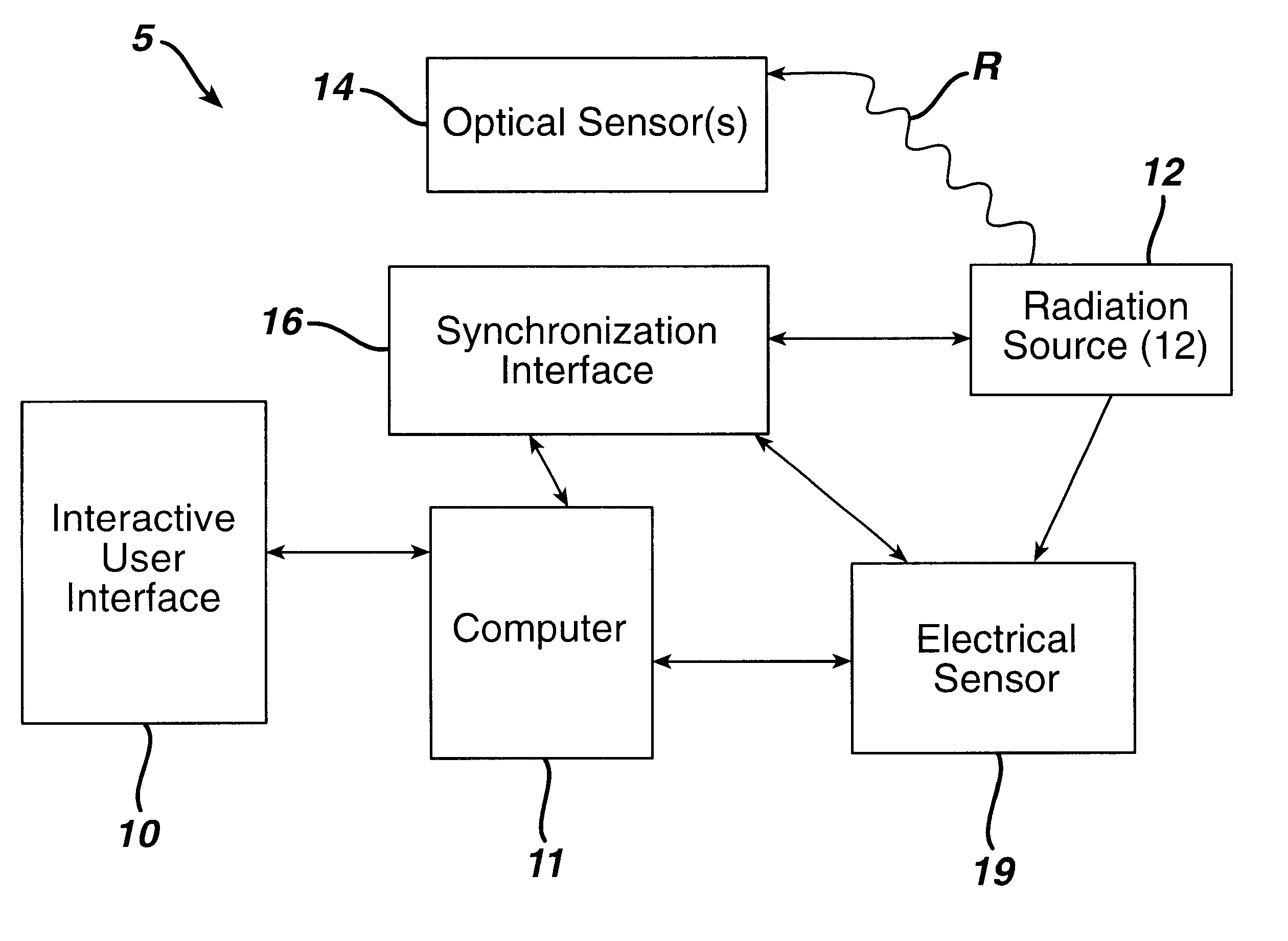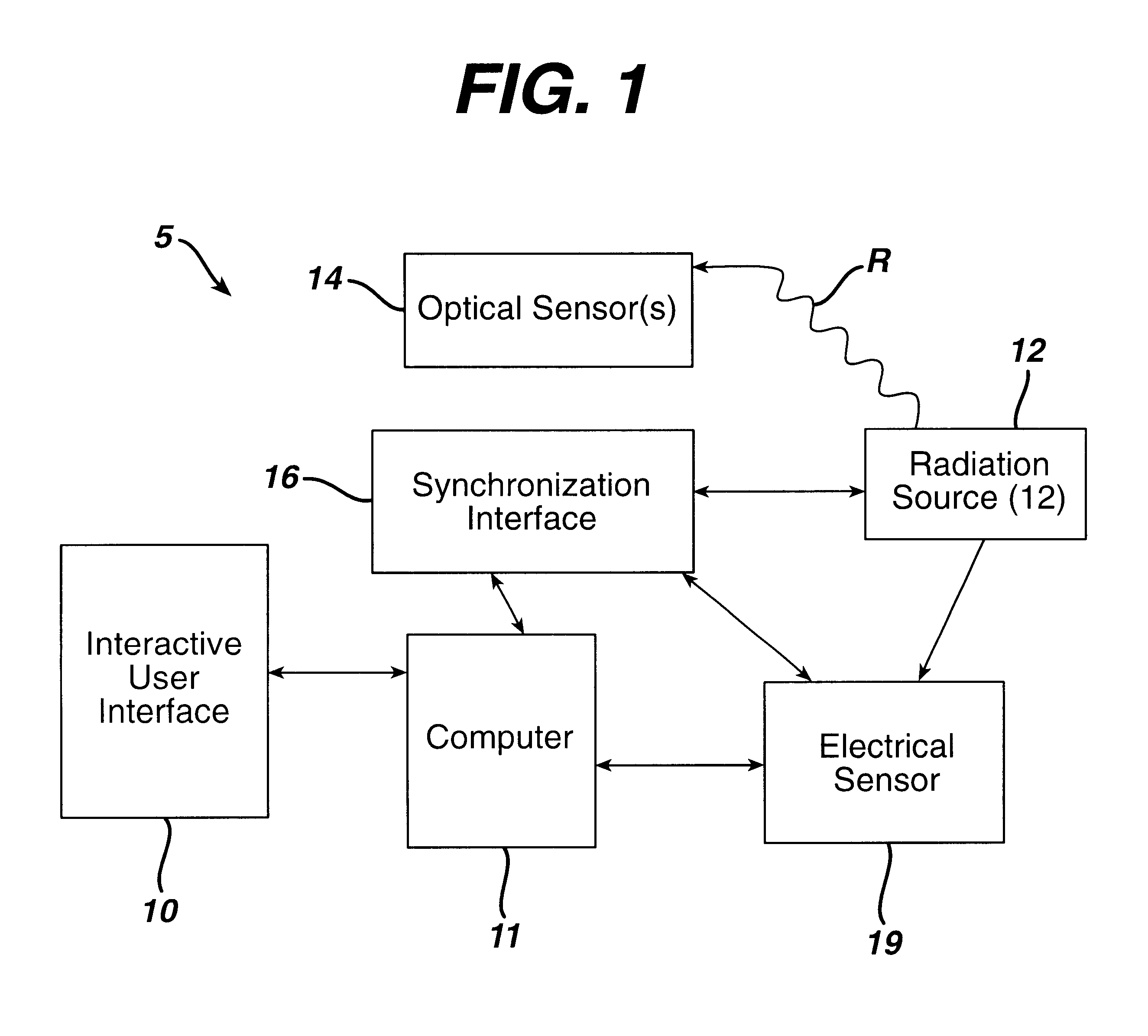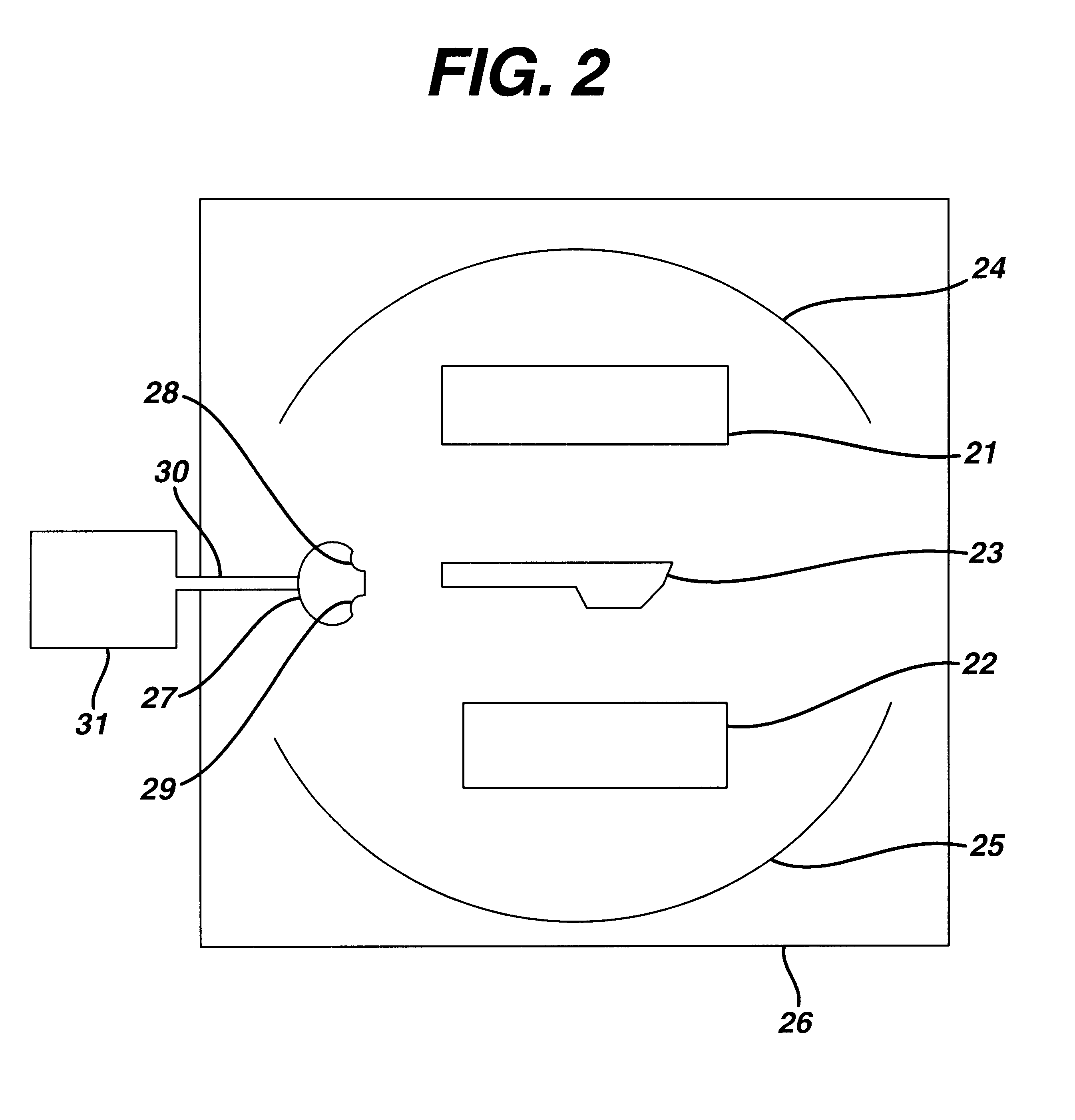Sterilization system
a sterilization system and sterilization method technology, applied in the direction of material analysis using wave/particle radiation, chemical methods analysis, instruments, etc., can solve the problems of no conditions defined to achieve sterility, time-consuming and laborious sterilization step of batch-wise autoclave, and inapplicability of ultraviolet calorimeter to calibrate a photodetector to international standards
- Summary
- Abstract
- Description
- Claims
- Application Information
AI Technical Summary
Benefits of technology
Problems solved by technology
Method used
Image
Examples
example 1
The control system described herein was used to generate a spectroradiometric map of a single radiation source for a PurePulse PB1-4 system. The radiation between from 240 to 280 nm was measured at 21 mm from one of two lamps, at a power level of 52%. The radiation was measured in 5 mm increments -25 mm to 25 mm from the center of lamp perpendicular to the axis of the lamp. The graph produced by the system is shown in FIG. 3.
example 2
Spectroradiometric measurements of a lamp were made when the lamp was new and after 2600 flashes of the lamp. Although the total energy of the lamp had only decreased by 3.4% (as measured with a thermopile calorimeter), FIG. 4 shows that the energy of the lamp between 240 and 280 nm (the range of radiation critical for sterilization) had decreased by 8.6%. The change in the energy of the lamp between 240 and 280 nm, was enough to result in the survival of the more resistant microorganisms; however, this change would not be detected by a system which only measures the change in the overall energy. In FIG. 4, the spectroradiometric measurements of the new lamp are the solid line, and the spectroradiometric measurements of the lamp after 2600 flashes is the dashed line.
PUM
 Login to View More
Login to View More Abstract
Description
Claims
Application Information
 Login to View More
Login to View More - R&D
- Intellectual Property
- Life Sciences
- Materials
- Tech Scout
- Unparalleled Data Quality
- Higher Quality Content
- 60% Fewer Hallucinations
Browse by: Latest US Patents, China's latest patents, Technical Efficacy Thesaurus, Application Domain, Technology Topic, Popular Technical Reports.
© 2025 PatSnap. All rights reserved.Legal|Privacy policy|Modern Slavery Act Transparency Statement|Sitemap|About US| Contact US: help@patsnap.com



